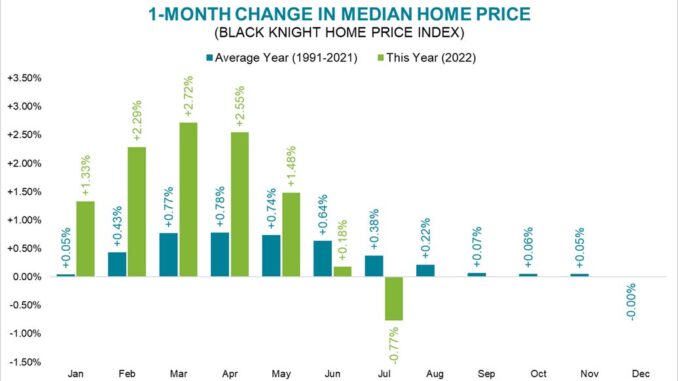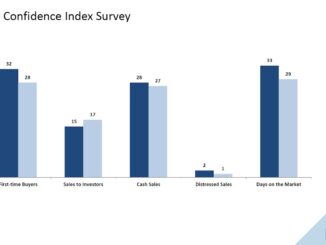
Declining mortgage rates could have improved affordability for buyers in the housing market in February, but instead spurred a demand that, combined with a persistent lack of inventory across the U.S., put more pressure on home prices.
According to the Black Knight’s mortgage monitor report, home prices rose 0.16% nationally in February compared to the month prior, marking the first monthly increase after seven months of declines.
In total, 39 of the 50 largest markets saw home prices increase on an adjusted basis in February. To compare, prices fell in November in 48 of 50 markets.
“The purchase market increased when rates declined in the early part of the month, and borrowers were quick to take advantage of limited inventory,” Andy Walden, Black Knight’s vice president of enterprise research, said in a statement. “In many areas of the country, that dynamic – low inventory and a modest rise in demand – led to an uptick in home prices.”
The annual home price growth rate fell to 1.94% in February, hitting a rate below 2% for the first time since 2012. Black Knight still expects the annual home price growth rate to fall below 0% by April, but said it would be a “temporary milestone,” should inventory challenges persist and mortgage rates increase.
And, according to Walden, the unfortunate reality is that the scarce supply of inventory that’s the source of so much “market gridlock” isn’t getting any better.
“Without a significant shift in interest rates, home prices or household income, this is a self-fulfilling dynamic that is quite likely to continue for some time,” Walden said.
In February, the number of homes available for sale fell for the fifth consecutive month, and new listings ran 27% below pre-pandemic levels. In addition, 47 of 50 markets saw their active listing count decline that month.
On the bright side, homeowners with mortgages still had $9.3 trillion in tappable equity available in February amid rising home prices.
Reaction to bank failures
According to the Black Knight report, as of the week ending on March 18, purchase lock counts were 21% lower compared to the same week in 2019 — and 30% below the levels for the same week in 2018.
However, Optimal Blue‘s 30-year conforming rates fell to 6.54% on March 13 due to banks’ failures (down from 6.73% earlier in the month), and purchase lock volumes spiked to levels not seen since July 2022. Meanwhile, refinance volumes remained low at 12.5% of rate locks, with cash-outs representing 7.1%.
In February, it took 33.2% of the median household income to make the monthly principal and interest payments on the average home purchase, roughly equivalent to the peak of the market in 2006, and well above the long-run average of about 25%, according to Black Knight.
Black Knight estimates that affordability would return to the long-run average with a 10% drop in home prices, a return to 5.25% interest rates on a 30-year mortgage and a 5% income growth — or some combination thereof.
The national delinquency rate rose seven basis points to 3.45% in February and is now down 13% year over year.
According to Black Knight, March typically sees the most significant monthly improvement in mortgage delinquency rates as borrowers use tax refunds to catch up on their payments. However, smaller refunds and new economic pressures may lessen positive impacts this year.



